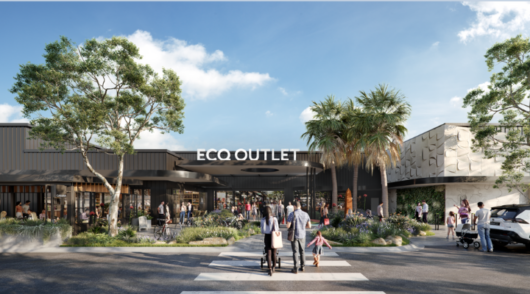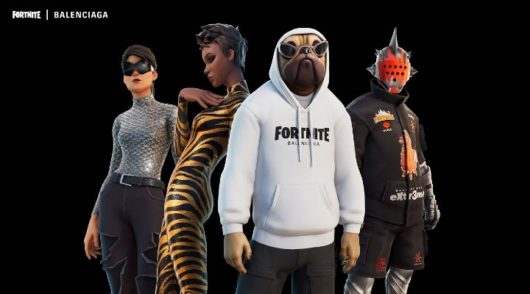Pre-Covid, augmented reality, the metaverse and livestream shopping were distant concepts for many mainstream retailers. Fast-forward just a couple of years later, and Target is experimenting with AR and even McDonald’s in the US is joining the metaverse.
“We are at the forefront of innovation with social commerce, enhanced retailing and emerging retailing. New and emerging technologies are needed to ride on these trends,” said Joshua Emblin, Territory Director, APAC, at Commercetools.
“This is why retailers must take advantage of agile infrastructure to successfully capitalise on limitless commerce possibilities and create a truly immersive experience.”
Here are a few of the next generation of retail opportunities for brands, according to the new Social, enhanced, emerging report from Commercetools.
Let’s get social
When Covid hit and retailers were forced to come up with new ways to maintain customer relationships, savvy brands turned their focus to social media, where an increasing number of Australians were now spending their time during the lockdowns. Off the back of that, retailers started selling products exactly where their customers were already spending their time.
According to Commercetools’ report, the most popular platforms for shoppers to purchase from were Facebook (70 per cent) and Instagram (42 per cent). While TikTok is an emerging platform, purchases from it are significantly less (12 per cent).
While several platforms have recently launched live shopping capabilities, including Pinterest and Twitter, the one to watch is YouTube.
“YouTube is likely to rapidly develop into an effective sales channel in multiple categories and for a wide range of shopper segments,” stated the Commercetools report.
Although 28 per cent of shoppers interact with YouTube, it has not traditionally been possible for viewers to shop directly from the platform, although, a live shopping feature on YouTube15 has just launched. Interestingly, the 65+ demographic is particularly active on YouTube. In the last 12 months alone, that customer base’s social commerce spending has risen 50 per cent, from $10/month to $15/month.
According to the report, as retailers begin embracing more social channels, it’s important that brands ensure that the customer’s experiences are consistent across all platforms.
This includes ensuring that the customers:
• Access the same catalogue and products;
• Enjoy the same campaigns and promotions;
• Are able to use their loyalty privileges; and
• Have their purchases captured, fulfilled and serviced seamlessly, regardless of the channels they interacted with.
Exploring the next frontier: AR and VR
From Adidas and Sephora to Ikea and Tesco, forward-thinking retailers have been experimenting with augmented reality and virtual retail for quite some time.
Last year, Gucci collaborated with Snap to launch the world’s first augmented reality shoe try-on campaign. Customers were invited to ‘try on’ four different pairs of the brand’s limited-edition sneakers. Once they had tried the sneakers, Snapchatters could then go straight to the product page and make a purchase via the “shop now” button.
If you think AR is simply for bored Gen Z consumers, think again, as interest is actually strongest among Millennials, who account for one in three of all retail spending in Australia, said the report. Meanwhile, the global AR-in-retail market is forecast to grow at a rate of 47 per cent between 2020 and 2027.
While only 13 per cent of Australians so far have used AR to try on clothes online and some experts believe it won’t be until 2025 that it increases to 18 per cent, 73 per cent feel that they are more likely to purchase items that they had tried on with AR. Indeed, AR and VR have the ability to potentially reduce returns by 31 per cent.
It’s time to listen up: Voice commerce
It’s surprising that voice commerce doesn’t get as much airplay as other emerging retail opportunities, such as the metaverse or AR, especially as 26 per cent of Australians own a smart speaker. Engagement with these devices is high, with 67 per cent using one every day and 88 per cent using them at least once a week, largely to either check the weather (56 per cent), ask a general question (53 per cent) or check the time (50 per cent). At the moment, only 33 per cent of smart speaker owners use their device to interact with a brand, product or service online. Even fewer have used it to purchase a new product (28 per cent).
However, according to the Commercetools report, there’s still opportunity there for brands.
“While shoppers’ desire to see the item is the most common barrier to e-commerce, it should not necessarily be a barrier to the use of voice commerce to re-order regular items. While subscription services for mainstream retail items typically hover around 5 per cent, around 20 per cent of shoppers are interested in the concept. Voice commerce could potentially address at least some of this market,” stated the report.
“As has been the case with e-commerce, it is likely that over time barriers to voice commerce such as ‘hadn’t thought of it,’ ‘not interested’ and ‘not sure of the process’ will all become less significant”
While some of these forms of emerging retail may seem like an optional “nice-to-have” by some in the industry, the reality is that forward-thinking retailers know that the key to success is in ensuring that you are exactly where your consumer is.
“The modern consumer is bombarded with a plethora of online shopping channels – social commerce, voice commerce and live shopping,” said Emblin in the report.
“Truly a modern retailer would be able to engage in commerce anywhere and everywhere, with no limitations and boundaries, to engage the modern consumer.”
To download the Commercetools report, click here.






